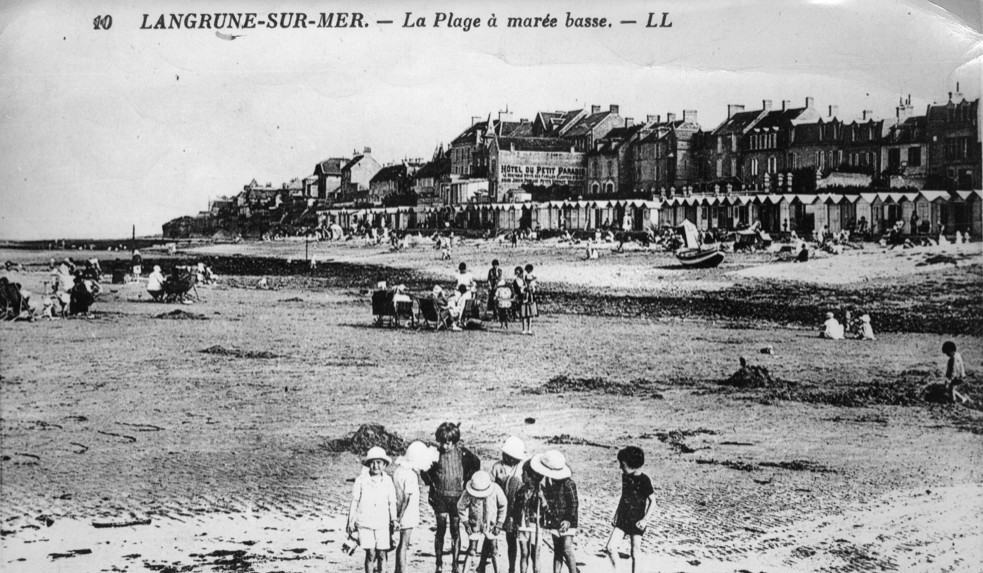A public appeal was made on the BBC radio in March 1942, for holidays photographs taken by civilians during their holidays in France before the war. The public were asked for images of all places in France so as to not draw attention to the proposed landings areas. Family photographs showing groups of all ages were helpful for gauging the slope of the beach; a baby sat on the sand whilst a woman waded in the sea gave a valuable indication as to the gradient of the beach beneath the water. Many of these photographs have been preserved by the Imperial War Museum, such as the one of a group of French civilians on the beach of Arromanches-les-Bains and a holiday postcard sent back from Rue de Bayeux in Caen. Mary Harpem recalled being sent to Notre Dame school in France and staying in a convent for three weeks near Arromanches, taking photos of her girlfriends on a box brownie camera. A photograph from this set was submitted for the appeal.
By 1944, over ten million images had been gathered together, which formed a comprehensive picture of the beaches in Normandy, including their gradients, terrain and tidal conditions. Professor John Bernal had been called in to evaluate much of the information and produce a detailed plan of the geological and topographical information. From this information, the most similar beach in Britain could be selected for landing practice. Brancaster Beach in Norfolk proved almost identical and was a valuable resource for the pilotage parties that were tasked with taking measurements from the real beaches and translating this to produce replica shore defences in Britain. Postcards, guidebooks and harbour regulation cards were all valuable and contributed to the work of codebreakers at Bletchley Park, the French resistance and intelligence officers parachuted into France.
